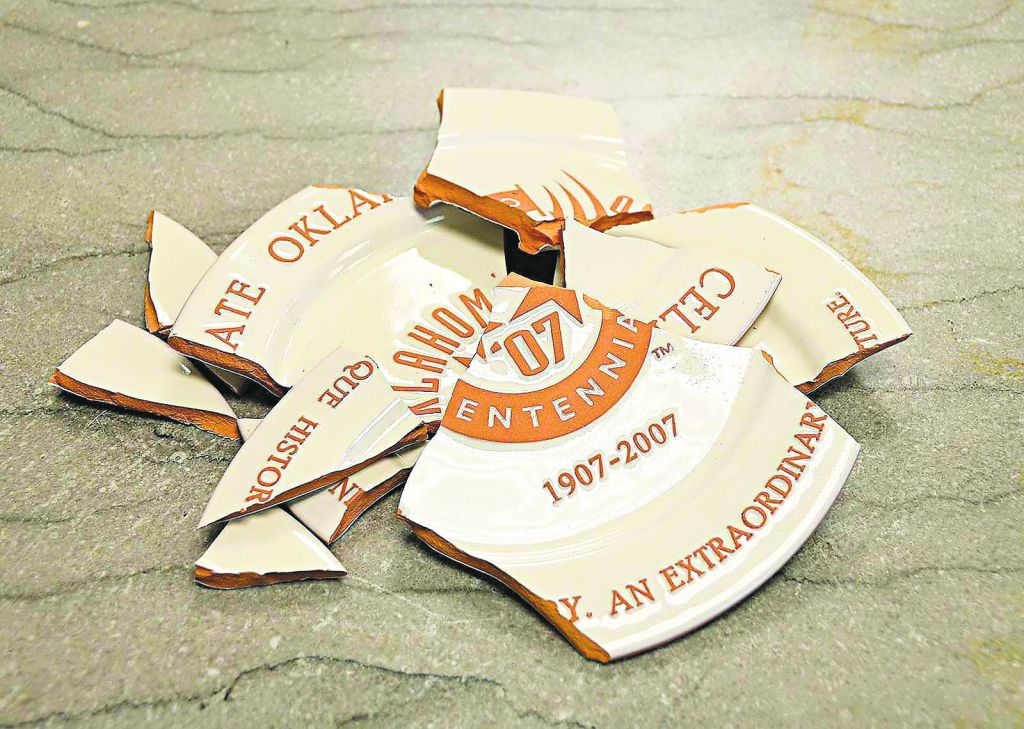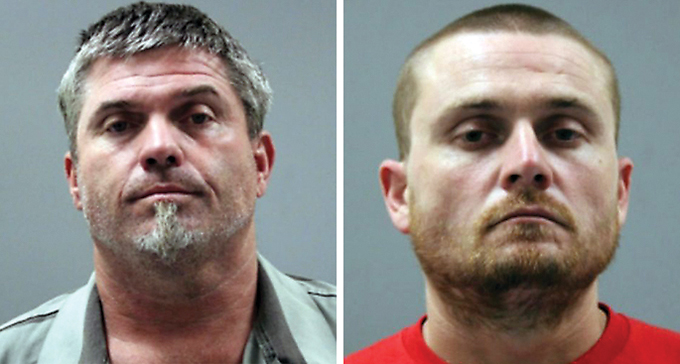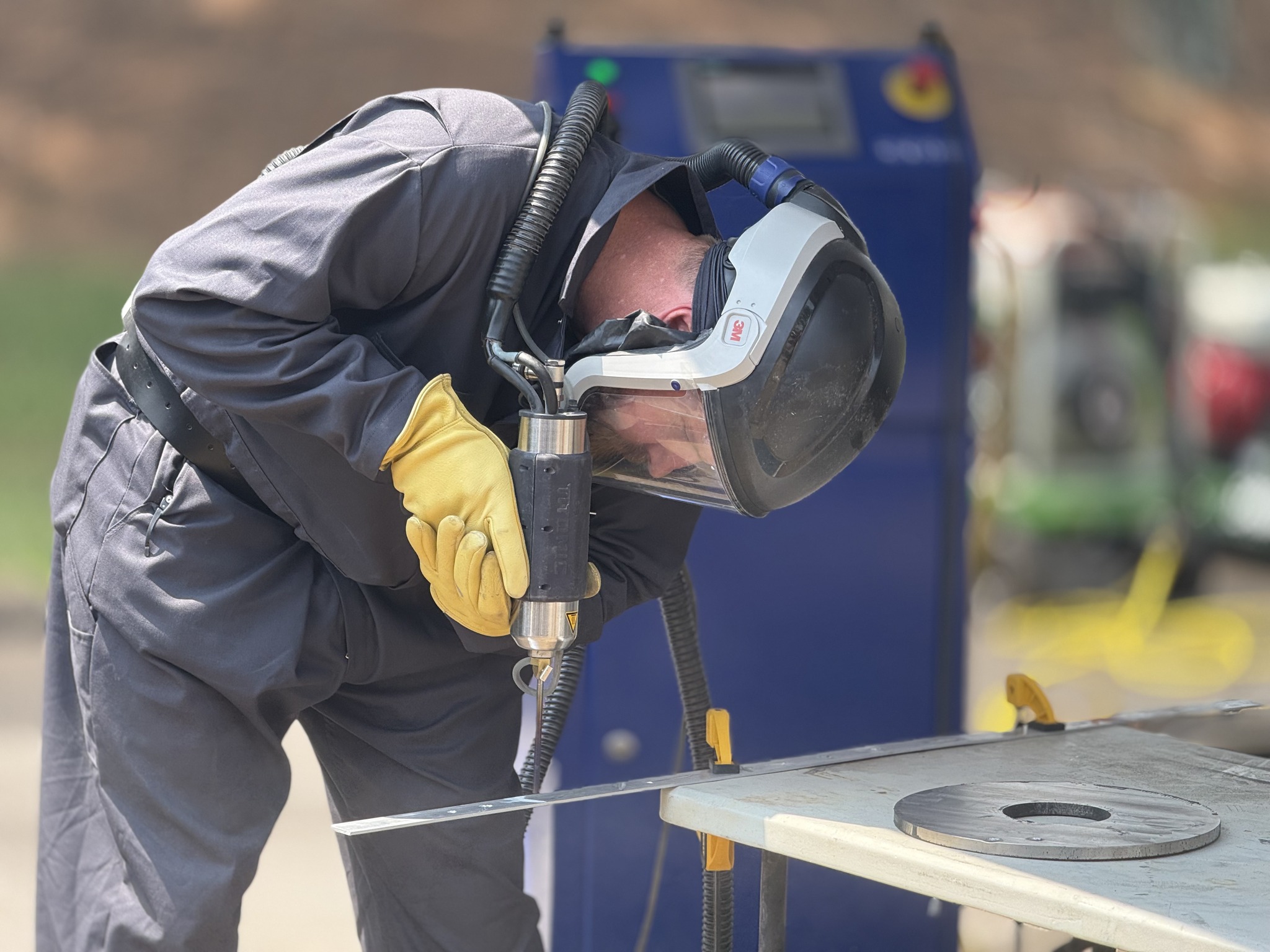Who’s at fault? Seismic surge opened floodgates of data, cooperation
Published 6:15 am Sunday, September 20, 2015

- A 4.2 magnitude earthquake Feb. 5, 2015, knocked this Oklahoma Centennial plate off the wall at Alfalfa County Courthouse, shattering it. The quake also caused cracks in several walls. (Photo by DESIREE BULLER | Cherokee Messenger and Republican)
EDITOR’S NOTE: This is the third installment of a six-part series on earthquakes. The fourth installment of this earthquake series runs Sunday, Sept. 27, 2015.
On the heels of the historic 2011 earthquake, the Oklahoma Corporation Commission had enough concern about seismic activity that the state regulatory agency held a public hearing over a permit involving setting off charges.
Trending
The hearing, on a 3D seismic permit to be issued for the Prague area — where the largest recorded Oklahoma earthquake, measuring 5.6 magnitude, was centered — sparked a flood of new data now used in regulating the oil and gas industry.
“3D seismic is extremely sophisticated, extremely expensive testing that oil and gas producers use to find out where the gold’s buried,” OCC spokesman Matt Skinner said.
“Usually, it involves setting off charges — not huge charges, but charges nonetheless —and, obviously, this area had had a huge earthquake and we wanted to have a public hearing. With what we know now, it may sound a little strange, but back then, nobody knew. We’re laymen; remember we’re not the seismologists and the geophysicists, that’s why we work with (Oklahoma Geological Survey).”
SCROLL TO BOTTOM of story for interactive map of Oklahoma’s injection wells and earthquakes.
Click HERE to view Who’s at Fault? story Collection
During the course of the hearing, former OGS Seismologist Austin Holland told the commission it was not only OK to do the testing — because it would not set off an earthquake — but the state could really use the data acquired through the permit in the study of seismicity, Skinner said.
Trending
“Under Oklahoma law, nobody can see it. It’s absolutely protected. The commission can’t see it, nobody can see it,” he said.
Commissioner Dana Murphy asked the head of the 3D seismic company if it would be willing to share the data with the OGS, Skinner said. The company had to check with the data’s owners, which had a contract with the 3D seismic company.
“In the end, they said, ‘Yes, that we’ll share the data with Oklahoma Geological Survey,’ obviously under very specific conditions because this is millions of dollars worth of data and you don’t want a competitor stealing it from you,” he said. “Nobody knows more about what’s underground in Oklahoma than the oil and gas companies. So, that opened the door for them to begin sharing their data.”
The “big game changer” for the OCC, in responding to increasing earthquake rates, has been increased data provided with cooperation from the oil and gas industry, Skinner said.
‘Huge rush of data’
The data push began in 2011, but most of the information really became available during 2014, Skinner said.
“It was a huge rush of data,” he said. “It was slow at first, but there were those in the industry who really rallied the troops, so to speak, saying, ‘Look, we can come up with a way of sharing this stuff, and sharing it in a way that we don’t have to worry about our trade secrets being stolen, and it will really help researchers. And, more and more people started signing onto it at the same time Oklahoma Geological Survey was working hard — in terms of using their own sources — to develop more and more data about what’s underground. So, between all of those factors, suddenly starting in, really 2014, we started seeing a flood of information come into us from OGS, who had obtained it from their sources, which included the oil and gas industry. And there’s a real steady exchange now.
“Now, we don’t know where (the information) comes from. When we get it, it’s already been turned into graphic files that we can use in our seismicity reviews and to look into earthquake areas and that kind of thing. The system is set up so, obviously, it’s protected. It is peer reviewed and OGS turns it into, as I say, a form we can use.”
The information includes everything from faults to possible sources of seismicity and disposal wells, Skinner said.
“So, we have a lot more to work with now than we had, oh, even a year ago. That’s been the big change for us. When we first came up with the idea of having every proposed disposal well go through a seismicity review, the problem that we had was that we didn’t have hardly any data to conduct the review with. Our fault data was really, well, it was poor,” he said.
Where quakes ‘kind of start’
Over time, the OCC’s stance has changed as the state saw an increase in earthquake frequency, Skinner said.
When seismicity ramped up in late 2013, the OCC started to single out small, independent areas of interest with magnitude 4.0 or greater quakes. Drawing a circle around a quake’s epicenter, the OCC would look at every disposal well within those 3 miles, he said.
Skinner said OCC workers went from well to well and found some issues. At the time, it was unknown what was important and what was not, so the OCC did not give any slack — discovered issues had to be remedied. Later, the circle was increased, under OGS advisement, to 6 miles around an epicenter, but the OCC continued to deal with individual areas and individual wells.
“(In) 2014, the earthquake rate starts to really jump up horribly. We’re going from well to well to well. We find some things and we shut in those wells, but, meanwhile, the earthquake rate is going, you know, as everybody knows, in 2014 it just exploded,” he said. “So, that approach, which is kind of based on the pollution model we’ve always done over the years, which has been quite successful … doesn’t work for earthquakes.”
The OCC’s stance evolved as it examined individual wells and the focus turned to Arbuckle wells, which are located in the state’s deepest formation and right above what’s called the “basement rock.” Critical faulting lies in the basement, which is thought to be where a lot of earthquakes “kind of start,” Skinner said.
“It’s long been known that injection into the basement is a bad idea, if you’re in a seismically active area. We didn’t issue permits to inject into the basement,” he said.
Permits were issued to inject into the Arbuckle, which is the favorite formation for disposal — both from a regulator standpoint because it keeps the water safely there and far away from protected water, and from the oil and gas producers’ standpoint because it’s what’s called a “good taker” since it operates like a natural vacuum, Skinner said.
Micro to macro
The OCC found some wells are too deep through the Arbuckle, putting them into “communication with the basement,” he said.
“You can put pressure that way on the basement rock in a seismically active area — and Oklahoma is a seismically active state, regardless. So, we’re finding more and more wells that are in the basement. Now, we never checked for that before because it was never a concern. The (Environmental Protection Agency), nobody, ever issued guidance on, ‘Hey, watch out for injecting into the basement,’ because it never occurred to anybody. I mean, seismologists knew about it because they were looking into Rocky Mountain flats back in the (1960s), but it just wasn’t an issue, when it came to water protection, because there was no way for the disposed water to work its way back up to the water you’re trying to protect,” Skinner said. “So, even if you went a little bit past the Arbuckle, in terms of water protection, it was never an issue.
“So, here it is, the seismicity rate has run away from us, we’re on this micro model that obviously isn’t working, it’s taking too long, and that’s when the oil and gas division director, Tim Baker, made the decision, ‘We need to go from a micro approach to a macro approach.’ So, there’s our change of stance. We’ve gone wider, bigger. We need to get our hands around groups of wells, not single wells. And the first thing we need to look at is whether or not wells are in the basement, because we are finding them, so we know they’re out there.”
Through this change in stance, the OCC issued a directive in March, which required 347 well operators prove wells were not in the basement or shut the well off and plug back 100 feet above the base of the Arbuckle, he said.
The OCC’s latest step, a volume cutback in Logan County, would have been impossible a year ago because there was not data to do the type of analysis needed to formulate an area or how much volume should be cut back, Skinner said.
When it comes to Logan County, there’s a question about the seismicity with no high profile wells, he said. So, the OCC designed a volume cutback because there’s “no wells, really, to go after individually.” Under the cutback, well operators are reducing volume by 38 percent, taking it to below the volume levels of 2012.
“We know a lot more than we did,” he said. “We have a lot more to learn. We have people now, that we didn’t have before, thanks to the quarter million dollars in grants we’ve gotten from the secretary of energy that help put that data in a way that we can use it, manipulate it, look at it, work with OGS on it, in an easier fashion. Again, we have a ways to go, but a year ago, we had one person who also had things — nothing to do with earthquakes — and had a huge program to run outside of the earthquake deal, and he had no real help at all. We didn’t have the resources.
“I’m not saying we couldn’t use more, and certainly OGS can use a lot. It certainly is a night-and-day difference from where we were in 2013.”
A ‘cooperative effort’
Injection wells located within an area of interest — a 122-square-mile area around the “center of an earthquake cluster” — are required to monitor pressures and volumes, Skinner said.
“If you’re operating a disposal well in an area of interest, you have to go to daily recording of pressures and volumes and weekly reporting. That goes up on an FTP (File Transfer Protocol) site that researchers have access to, so they can track what’s going on there,” he said. “That is self-reporting, I mean, obviously, that is recorded by the operator and then sent to us. It is subject to review, and we do have inspectors that go out to certain wells and check.”
The OCC is using a “Traffic Light System,” which consists of a number of elements, including a “plug back” program, through which the depth of some deeper wells is reduced; seismicity reviews for proposed disposal wells; weekly volume reporting requirements for wells in areas of interest; and rules related to recording well pressure and volume, Skinner said.
“It was developed at the recommendation of the National Academy of Sciences, not specifically for Oklahoma but just in general, as guidance for the states trying to deal with the issue of induced seismicity. It varies from state to state, in terms of its actual form,” he said.
The system was first used in September 2013, when a well operator in Love County was told to cut back drastically on pressure and volume under a declared “yellow light caution,” after an outbreak of seismicity in the area. The well operator voluntarily shut the well down within 24 hours. It remains shut down to this day and cannot start again without permission from the OCC.
Over time, the Traffic Light System has grown and evolved, Skinner said.
“It’s obviously very, very different now than the way it started. It’s far more sophisticated, takes in a far larger area, the definitions have changed and so on, as we’ve learned more and gathered more data,” he said. “It’s important to note that when it comes to whether or not a given well or a given group of wells caused a given event, that’s really for the geophysicists and seismologists and, again, that’s not us. Our issue is, what fits the risk profile? And what should we do if they do fit the risk profile? Like in Crescent, we had three wells that fit the risk profile, based on the research. Obviously, it’s prudent to take action on their operations.
“We haven’t had any pushback. No (well operator) has gone to court and said, ‘You don’t have the power to do this.’ I mean, the operators have been extremely cooperative. They’ve just done what we would have them do, and it’s really been more of a cooperative effort.”





